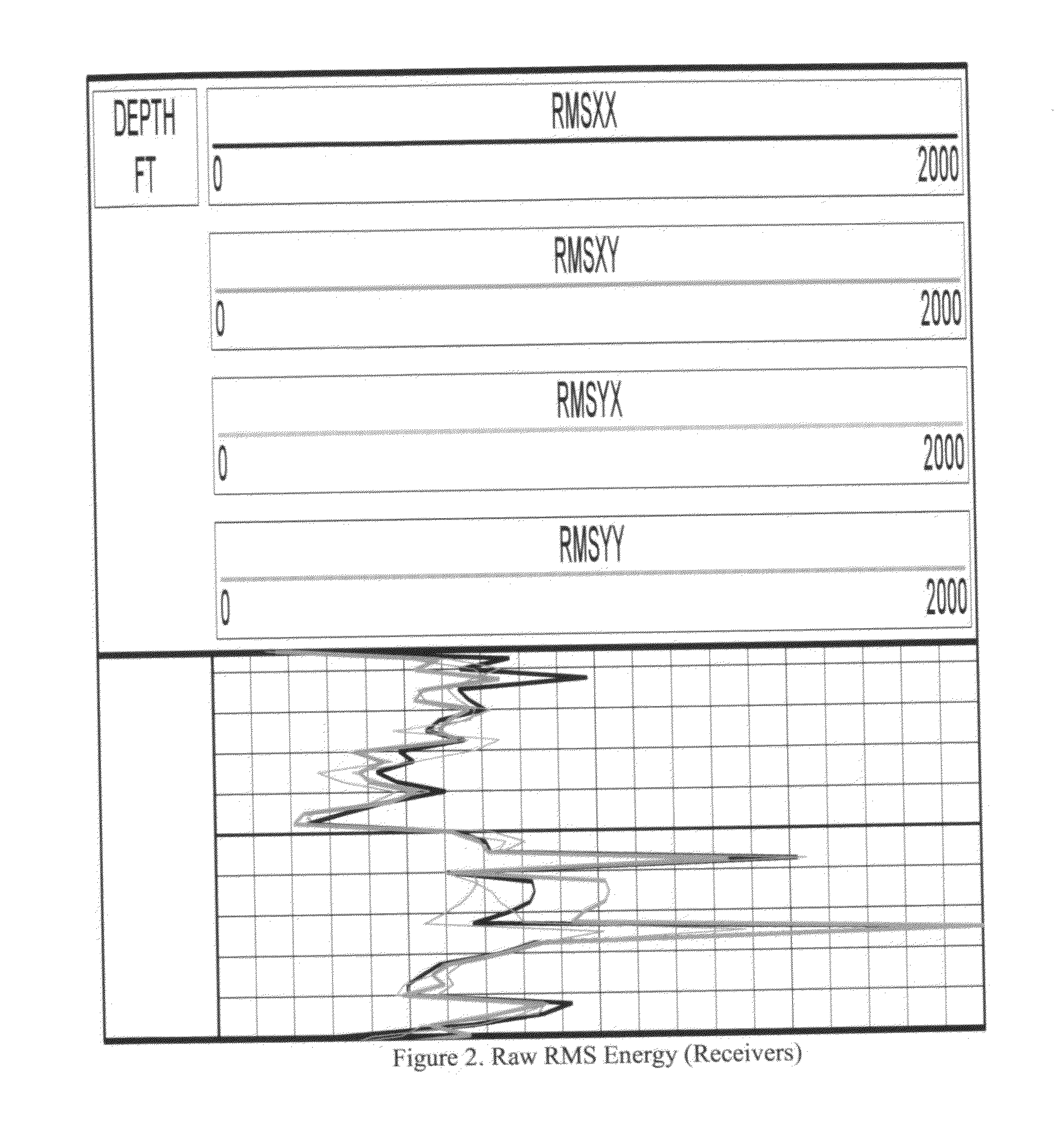Estimation of anisotropy from compressional waves from array sonic waveforms in well logging
an array sonic waveform and anisotropy technology, applied in the field of earth formation investigation, can solve the problems of not taking advantage of the modem tools and technology now available, the anisotropy of shear wave fractures cannot be used to depict the present-day stress regime of fractures, and previous well-logging instruments could only provide data for perpendicular elongation of fractures, etc., to achieve complete and accurate stress history, accurate and complete results, and less cost of operations
- Summary
- Abstract
- Description
- Claims
- Application Information
AI Technical Summary
Benefits of technology
Problems solved by technology
Method used
Image
Examples
Embodiment Construction
[0032]To further understanding of the present invention, the following discussion is provided. Shear wave energy propagates in a direction perpendicular to the stress motion. When shear waves encounter anisotropic formations, they undergo shear wave “splitting” (the shear wave partitions into two components). Anisotropic formations can be caused by cracks and fractures, for example. The basins caused by these fractures may be indicative of an oil reservoir. As a result, shear wave splitting is used to determine fracture direction to identify the characteristics of the basin.
[0033]Moreover, in well-logging, it has been assumed that compressional waves are non-dispersive—that they do not split like shear waves. Compressional wave energy propagates longitudinally along the matrix. Older technologies could not provide accurate data on compressional wave propagation because it results in a subtler disruption. Present day tools, however, can provide accurate data of compressional wave ani...
PUM
 Login to View More
Login to View More Abstract
Description
Claims
Application Information
 Login to View More
Login to View More - R&D
- Intellectual Property
- Life Sciences
- Materials
- Tech Scout
- Unparalleled Data Quality
- Higher Quality Content
- 60% Fewer Hallucinations
Browse by: Latest US Patents, China's latest patents, Technical Efficacy Thesaurus, Application Domain, Technology Topic, Popular Technical Reports.
© 2025 PatSnap. All rights reserved.Legal|Privacy policy|Modern Slavery Act Transparency Statement|Sitemap|About US| Contact US: help@patsnap.com



